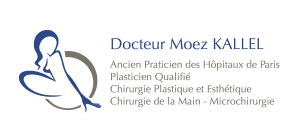Generalities :
- A distinction between Trapezo-metacarpal osteoarthritis (osteoarthritis) and scapho-trapezo-trapezoid arthrosis should be made
- Osteoarthritis at the base of the thumb and the osteoarthritis scapho trapezo trapezoid should be classified on X-rays (Kapandi incidences)
The Dell’s radiological criteria for classification
Dell1 : Pinching or subchondral condensation with no subluxation, no osteophyte
Dell2 : Small osteophytosis and greater than one-third subluxation of the M1.
Dell3 : Osteophytosis with major pinching of the joint line and greater than one third subluxation of the metacarpal
Dell4 : Total destruction of the joint line with prominent osteophytes, geodes and trapezo-metacarpal ankylosis
Crosby’s radiological classification (STT)
Crosby0 : no apparent anomaly
Crosby1 : Decrease in half of normal joint space
Crosby2 : the joint line is barely visible
Crosby3 : Presence of erosions, sclerosis and irregularity of joint spacing
We have to determine the ground on which osteoarthritis of the base of the thumb occurs. This will determine the most appropriate treatment for the patient. The elements to be taken into account :
- Age
- Professional and sports activity
- The dominant side
- Theight of the trapeze
- TM and STT
- In all cases, it is imperative to try the medical treatmen tbefore the surgical treatment.
- The medical treatment includes :
- Short orthesis (TM + MP) diurnal
- Long orthesis (wrist + STT + TM + MP) nocturnal
- Infiltrations of Antalgic corticosteroids – delayed
- Physiotherapy/ Kinesitherapy stabilizing TM without joint stress
- For rhizarthrosis, it is necessary to explain the advantages and disadvantages of each technique
Trapeziectomy
Mobility ++ , Strength +++ , Postoperative Recovery Time 3 months, definitive TTT. At the same time, it cure the ST, any patient, dominant hand, Need for strength, associated STT, all sizes, Dell = all
